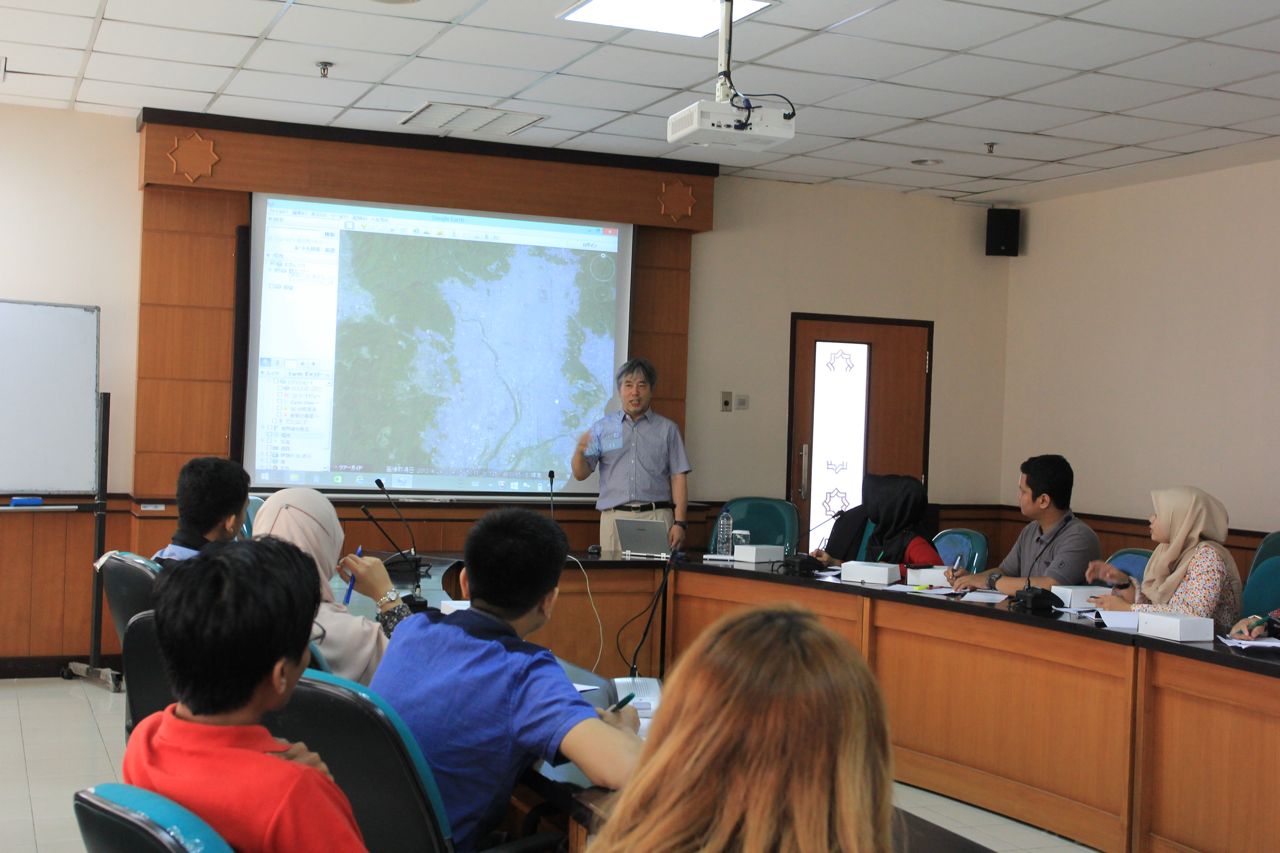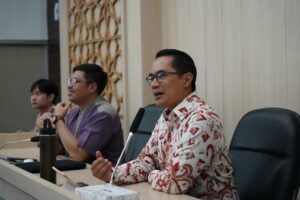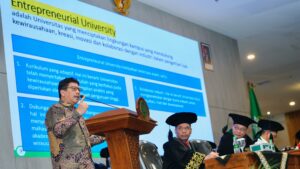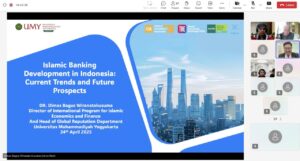Japan is a disaster-prone country, particularly sediment disasters. A number of disasters have occurred these recent four years, since 2011. It was uttered by Professor of Kyoto University Prof. Masaharu Fujita in a class session Disaster Management Summer School (DMSS) on Wednesday (12/8). He mentioned several disasters occurring these recent four years as typhoon talas in 2011 in Kii Peninsula, heavy rains in Kyushu and Hiroshima in 2012-2014, and typhoon wipha in Izu-Oshima Island in 2013.
“Heavy rainfall in Japan, especially in Kii Peninsula, becomes a factor causing sediment disasters in Japan,” stated Prof. Fujita. He inserted that it affected a lot of landslides and dam landslides in Oto city and Totsugawa village in Nata city, Japan. When the heavy rainfall causes dam leak, it will affects debris flow and expand to the residential area. Moreover, if it ensued in plateau, debris flow will also happen in lowland that most the Japanese settlement.
Prof. Fujita elucidated characteristics of sediment disasters in Kii Peninsula and Hirosima. Each area has distinct characteristics. “Heavy rainfall in Kii Peninsula ensued two to three days while rainfall in Hiroshima happens for several hours. Hence, researchers ought to notice it to anticipate the disasters of each area.
According to Prof. Fujito, disaster countermeasure of large scale disasters is divided into two aspects, namely structural countermeasures and non-structural countermeasures. Structural countermeasures focus on building dams like Sabo dams, Check dams, and Sand pockets. “Non-structural countermeasures concern with early warning system and evacuation, mapping, and educating community regarding possible disasters in their area. Even though disaster countermeasures have been anticipated, problems and risks of the two countermeasures may ensue. In non-structural countermeasures, many Japanese do not follow the issues of disasters so that they may not update the disaster information,” he informed.
Thus, conducting research of previous disaster characteristics will provide insight of the upcoming disasters. “For one reason, sediment disasters happen sustainably in simultaneous location, time, and scale,” asserted Prof. Fujita. The community is required to recognize exact time for evacuation and save place before the disaster ensued, and they should also be provided information of possible disaster simulation.







